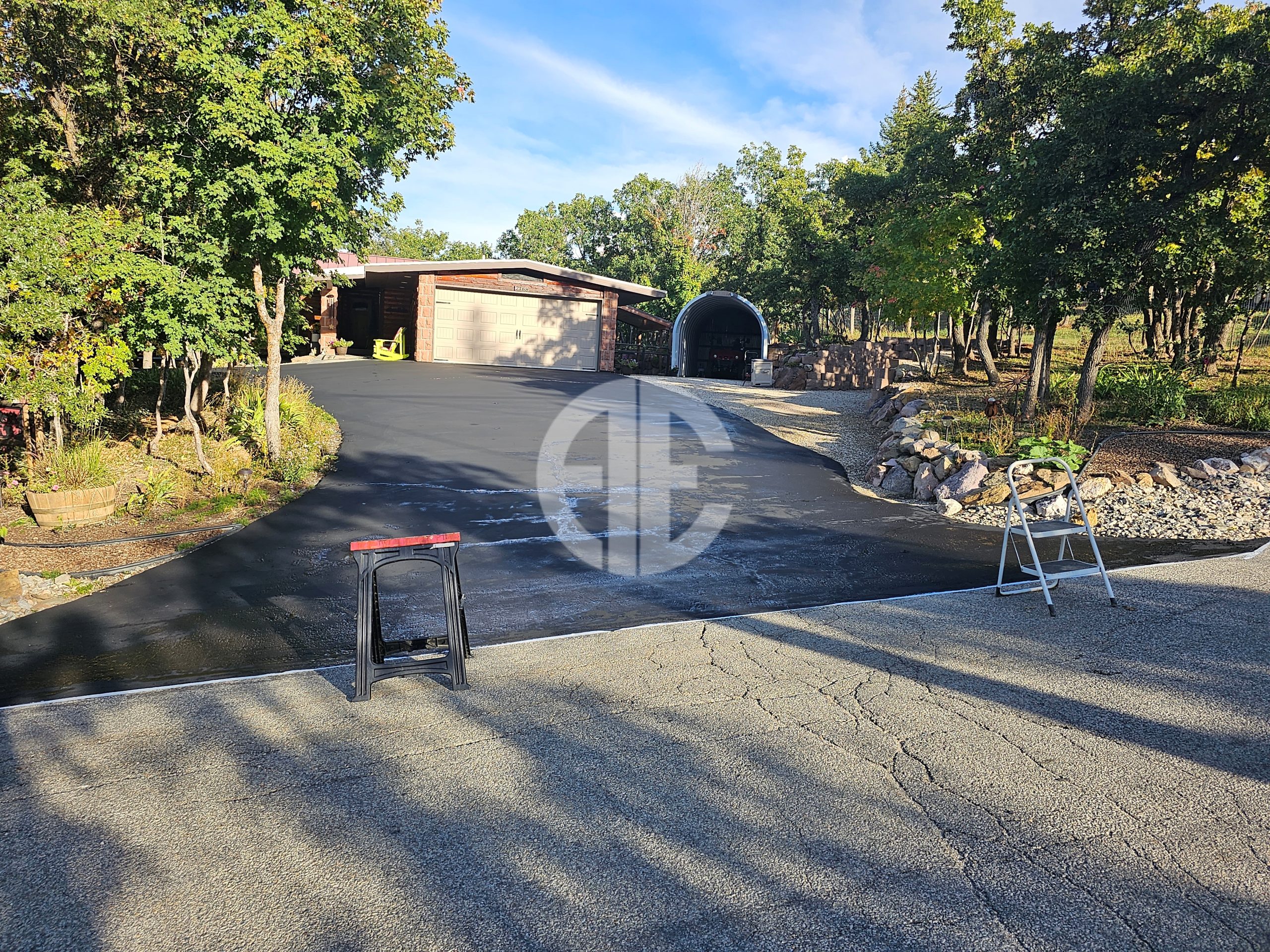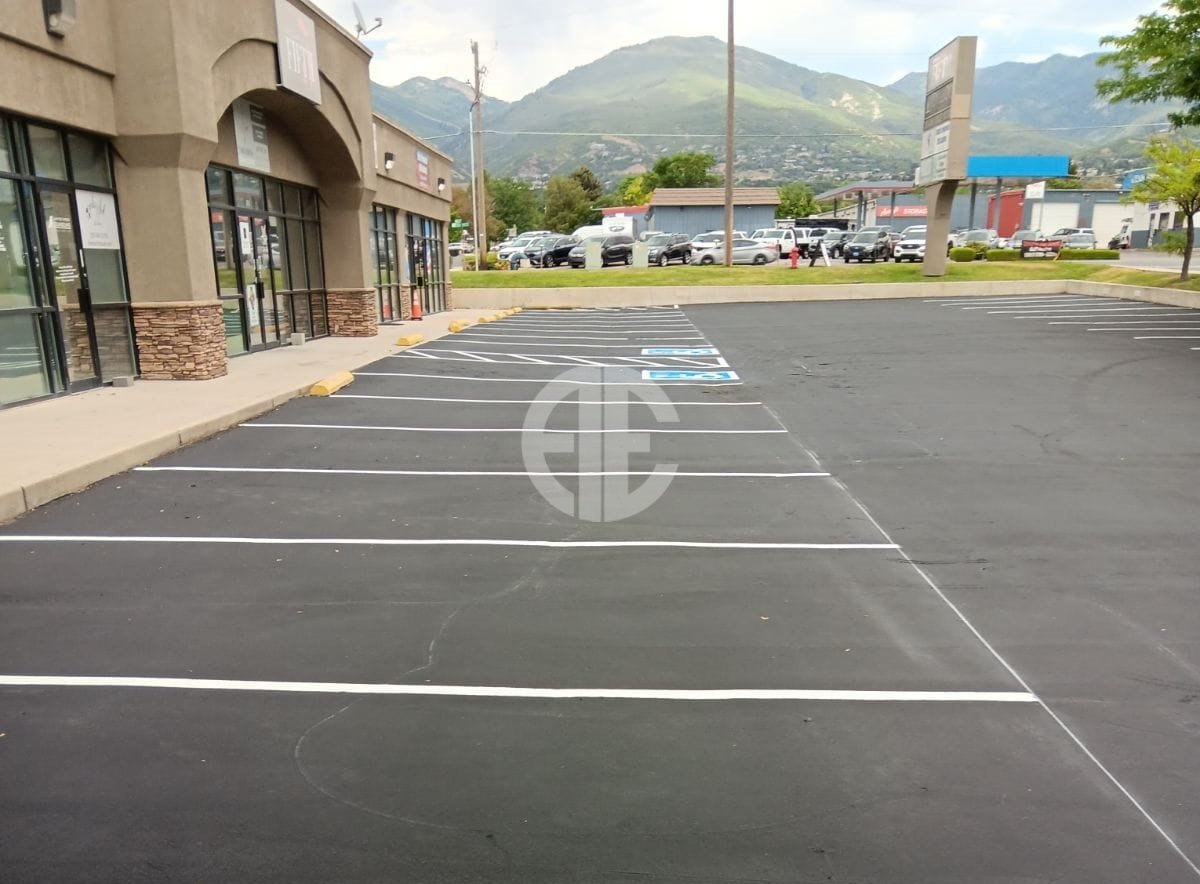When it comes to protecting your driveway or parking lot in Utah, sealcoating is one of the smartest moves you can make—yet it’s often misunderstood, skipped, or done wrong.
This guide covers everything most people don’t know about sealcoating: myths that cost you money, the best timing, how it’s different from crack sealing, what’s actually in the product, and why some sealcoats fail fast. If you want your asphalt to last—and look great doing it—this article is for you.
Sealcoating Myths That Cost Utah Homeowners Thousands
Let’s start by busting the biggest myth:
“Sealcoating is just cosmetic.”
Wrong. While it does give your driveway a rich black look, its real job is to:
- Block UV rays that dry out the asphalt binder
- Seal out water to prevent freeze-thaw damage
- Slow oxidation that leads to cracking
Skipping it saves you a few hundred now—but will likely cost you thousands in early replacement later.
Other common myths include:
- You only need to seal every 10 years (you don’t)
- It’s just a DIY bucket-and-brush job (not if you want it to last)
- It fills cracks (nope—more on that below)
When to Sealcoat (And When Not To) in Utah
Timing is everything. Sealcoating needs warm, dry weather—not blazing heat or overnight freezes. In Utah, the ideal sealing season is:
- Late April to early June, and again
- Late August through September
Avoid:
- Spring days below 50°F
- Windy or dusty days (bad for adhesion)
- Hot summer weeks above 95°F (causes flash drying and peeling)
Contractors who seal in poor weather conditions are cutting corners—and the result will show in just months.
Sealcoating vs. Crack Sealing: Know the Difference
Here’s where many homeowners get confused.
Sealcoating ≠ crack sealing. They serve different purposes:
| Type | Purpose | When to Use |
|---|---|---|
| Crack Sealing | Fills cracks > 1/10 inch | First, before sealing |
| Sealcoating | Protects surface | After crack sealing |
Using sealcoat over large cracks does nothing—the cracks remain open, allowing water in. Proper asphalt maintenance includes both services, in the right order.
How to Tell If Your Driveway Needs Sealcoating
If you’re unsure whether it’s time, use this quick Utah-friendly checklist:
- Is your asphalt surface gray or faded?
- Does water absorb into the surface instead of beading?
- Do you see hairline cracks starting to appear?
- Has it been more than 3 years since your last sealcoat?
- Does your asphalt look chalky or dry?
If you answered yes to two or more, it’s time to reseal—especially before winter hits.
Why Your Last Sealcoat Failed (And What to Do Differently)
We hear this all the time:
“I had it sealed last year, and it’s already peeling!”
Sealcoat fails when:
- Applied in the wrong weather (too cold, too hot, too wet)
- Asphalt wasn’t cleaned properly before application
- Cracks weren’t sealed first
- Low-quality or watered-down product was used
This time, demand a contractor who:
- Uses a commercial sprayer, not a broom
- Prepares the surface thoroughly
- Seals cracks first
- Applies at the right thickness, in the right conditions
What Kind of Sealcoat Is Your Contractor Really Using?
Most people never ask what’s actually in the sealcoat being sprayed on their driveway. But if you’re hiring a Utah contractor, this question matters more than you think.
Why it matters:
- Cheap sealers dry too fast in Utah heat and crack
- Weak mixes can’t handle freeze-thaw cycles
- Low-solids content means the coating wears off fast—often within one winter
What to ask your contractor:
- “What product line are you using?”
- “Is it blended for high-altitude UV and freeze conditions?”
- “Does it include mineral fillers like sand for added strength and traction?”
- “Are you applying one heavy coat or two lighter ones?”
If your contractor can’t tell you what they’re using—or gives you a vague answer like “just standard sealer”—that’s your sign to walk.
It’s More Than Just a Pretty Surface
Sealcoating is often treated like an optional luxury—but in Utah, it’s a necessary layer of protection against sun, water, and wear. Skip it, and you’ll pay more for early repairs or full replacement.
Understanding the timing, the materials, and the process gives you the power to hire smarter, protect your surface longer, and keep your property looking professional.
Next time someone says “just slap on some blacktop stuff,” you’ll know better—and your asphalt will thank you.
Trust Asphalt Experts – Your Partner for Asphalt Care Excellence in Utah








 Clearfield
Clearfield